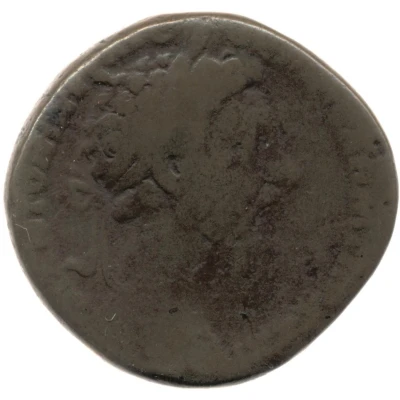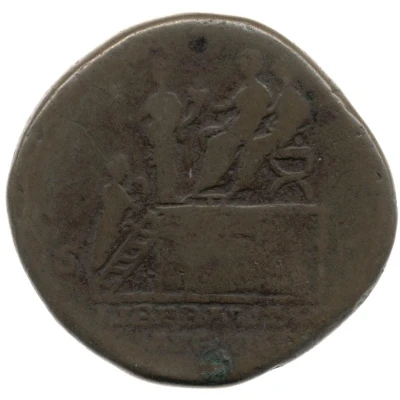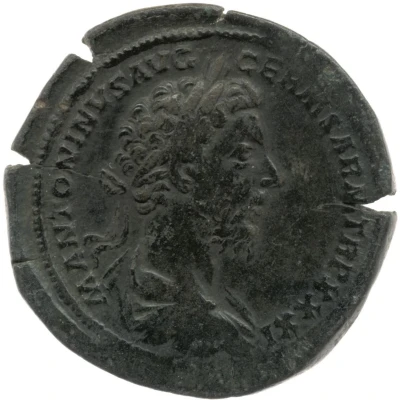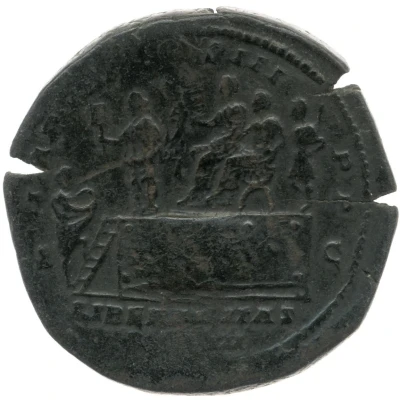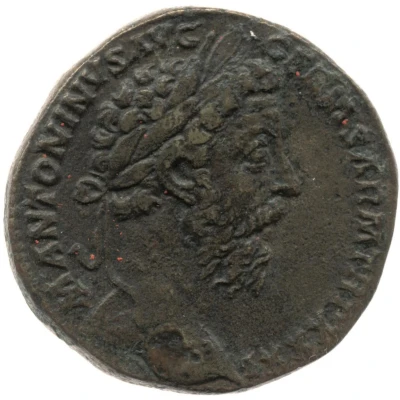
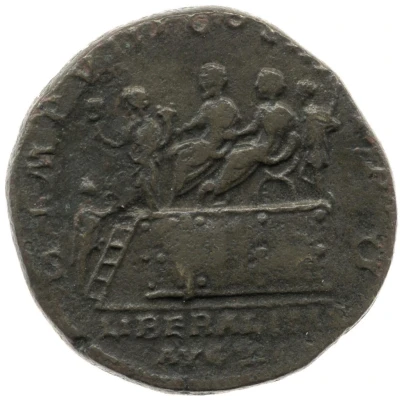

© Trustees of the British Museum
Sestertius - Marcus Aurelius and Commodus IMP VIII COS III P P LIBERALITAS AVG VII S C
| Bronze | 24.9 g | - |
| Issuer | Rome › Roman Empire (27 BC - 395 AD) |
|---|---|
| Emperor | Marcus Aurelius (Marcus Aurelius Antoninus) (161-180) |
| Type | Standard circulation coin |
| Years | 176-177 |
| Value | 1 Sestertius = ¼ Denarius |
| Currency | Denarius, Reform of Augustus (27 BC – AD 215) |
| Composition | Bronze |
| Weight | 24.9 g |
| Shape | Round (irregular) |
| Technique | Hammered |
| Demonetized | Yes |
| Updated | 2024-10-06 |
| Numista | N#263916 |
|---|---|
| Rarity index | 100% |
Reverse
Marcus Aurelius and Commodus, togate, seated left on curule chair on platform, extending right hands and left arms at sides; behind them, officer, standing left; before them, Liberalitas, draped, standing left, holding abacus in right hand and cornucopiae in left; below, citizen, togate, standing right on steps of platform, holding out fold of toga.
Script: Latin
Lettering: IMP VIII COS III P P LIBERALITAS AVG VII S C
Translation:
Imperator Octavum, Consul Tertium, Pater Patriae. Liberalitas Augusti Septima. Senatus Consultum.
Supreme commander (Imperator) for the eighth time, consul for the third time, father of the nation, the seventh liberality of the emperor (Augustus). Decree of the senate.
Comment
Mass varies: 23.94–25.77 g;Example of this type:
Trustees of the British Museum
Source:
Online Coins of the Roman Empire (OCRE)
Interesting fact
One interesting fact about this coin is that it features an image of Marcus Aurelius and Commodus, who were both Roman emperors, on opposite sides. This coin was minted during a time when the Roman Empire was transitioning from a republic to an empire, and it reflects the political and social changes that were taking place during that period. Additionally, the coin's design and inscriptions, such as the image of Liberalitas, the goddess of liberality, and the abbreviation "S C" which stands for "Senatus Consulto," provide valuable insight into the cultural and political values of the Roman Empire during this time.
